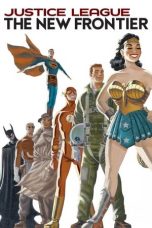- Source: 6th New York Cavalry Regiment
The 6th New York Cavalry Regiment, also known as the 6th Regiment New York Volunteer Cavalry and nicknamed the "2nd Ira Harris Guards", was a cavalry regiment of the Union Army during the American Civil War. The majority of its fighting was in Virginia as part of the Army of the Potomac.
Service
The regiment was organized as the 2nd Ira Harris Guard in New York City between September 12 and December 19, 1861, initially under the special authority of the War Department. The regiment was, in fact, at first the protege of Senator Ira Harris, of New York, who had been instrumental in securing the authority for its formation. The recruiting headquarters were at 4 Pine Street, in Manhattan, and the first rendezvous for the command was at Camps Herndon and Scott on Staten Island. Its organization was completed as early as October 24, 1861. The twelve-company regiment was divided into three battalions of four companies each. While training, the regiment was transferred to the state of New York and numbered as the 6th Regiment, New York Volunteer Cavalry on Wednesday, November 20, Thomas Devin, captain of a militia cavalry company, had been appointed colonel of the regiment two days earlier and Duncan McVicar lieutenant colonel.
Companies were mustered in as follows: A September 12, B September 27, D September 28, C September 29, E October 3. F and G October 24, H October 28, I November 2, L November 6, K" and M December 19, 1861.
= Further training at York
=On Friday, December 20, 1861, the regiment was ordered to York, PA. On Monday, 850 men, 200 horses, of the 6th New York crossed on a barge with some difficulty to Elizabethport, NJ, arriving at 3:00 a.m. Tuesday, Christmas Eve. An hour later, the regiment boarded the cars at the New Jersey Central Railroad (NJCRR) depot and was soon on its way over through northern New Jersey, crossing the Delaware at Easton into Pennsylvania on Christmas Day. The train continued onto Lehigh and Susquehanna Railroad (L&SRR) across the Lehigh River, eventually crossing the Susquehanna River, thence down its west bank for several miles and reached York at 3:00 p.m. on Christmas, 1862 after a 35-hour 250 miles (400 km) trek.
The regiment's new year began with each company receiving a keg of beer followed by a parade through the city ending with a reception. Through January, the regiment was put to work building barracks and stables while drilling and training. Rumors were rife that the command would be disbanded or converted to infantry, much to the disinclination of the men. By Friday, Jan 31, the barracks were complete, and the troopers moved in. At that point, the regiment's time was solely devoted to drills, inspections, guard duty, and learning cavlry tactics. The 6th New York earned a reputation for discipline and orderly conduct seldom enjoyed by a regiment quartered in a city. As February continued, alongside the drills and saber exercise, they were elateed with news of victories at Fort Donelson and Fort Pulaski. The rumors remained, sparked by the lack of enough horses. After an inspection, Brig. Gen. Stoneman, chief of cavalry, reported that the 6th New York Cavalry was an efficient and highly disciplined regiment.
At York, the more the men saw of their now 40-year-old militia-bred colonel (Devin) the better they liked him considering him greatly militarily skill, well-qualified, and while a few other volunteer cavalry colonels were as well-drilled, there were none better. As February turned to March, Devin received orders to bring his command to Perryville, MD in the defenses of Washington attached to Military District of Washington. At the Perryville train depot, it would relieve the 11th U. S. Infantry guarding the large government depot at that point, as well as guarding and caring for thousands of sick horses and mules.
= Initial deployment
=In March, Devin received orders to bring his command to the front. The 6th New York regiment was ordered to join the defenses of Washington attached to Military District of Washington. Its post was the train depot in Perryville, MD, where it relieve the 11th U. S. Infantry The post guarded the station and the supply depot there. Among its duties there was guarding and caring for thousands of sick horses and mules.
On Thursday, March 6, at 9.30 a.m. on the 6th, the 1st Battalion decamped and took train for Perryville, the rest of the regiment being under orders to follow for same place. The next day, at 3:00 p.m.,the 2nd and 3rd Battalions formed line and marched to the depot. Arriving there two hour later, Company I was detailed to put the 200 horses on board and had quite a lively time of it. Steaming out of York at 7:00 p.m. and arrived at the Philadelphia, Wilmington and Baltimore Railroad's (PW&B) President Street Station in Baltimore at 5:00 a.m. on Friday, March 8.
Due to a thirty-year-old ordinance banning steam engines operating in the city, there was no direct steam rail connection between President Street Station and the Baltimore and Ohio Railroad's (B&O) Camden Station. Rail cars that transferred between the two stations had to be pulled by horses along Pratt Street down ten blocks to the southwest to Camden Yards. At 9:00 a.m., the 6th New York marched down Pratt to the other station. Boarding the B&O at Camden at 10:00 a.m., the men started on the way to Perryville, arriving there at 1:30 p.m., and crossed the mouth of the Susquehanna to encamp there at the head of the Chesapeake Bay, opposite Havre de Grace.
While the regiment was at Perryville, Col. Devin visited Washington to plead for horses and orders to be sent to the front. Again, the camp abounded with rumors that the 6th New York would be disbanded, and the troopers remained firm that they would not go as infantry. The regiment suffered from sickness in due to bad water, heavy rains and high winds “… the rain came through every crack in the barracks; the floor resembled a hog-pen; everything was all wet and splashed, uniforms and equipments dripping; every one was nearly dead and heartily sick of the dormant life.”
On Monday, March 17, morale improved as each company received ten horses, and all non-commissioned officers drew saddles. On Tuesday, Devin returned to Washington to learn, if possible, the War Department’s plans for the regiment. On Friday, March 21, the regiment suffered its first loss when one of the men in Company I died of sickness.
= The 3rd Battalion deploys for the Peninsula Campaign
=At the opening of Maj. Gen. McClellan’s Army of the Potomac’s(AoP) spring Peninsula Campaign, the regiment’s 3rd Battalion (Companies B, D, F, and H), under command of Maj. Floyd Clarkson, was detached participate in the operation was assigned to the Companies D and K served unbrigaded in Brig. Gen. Sumner’s II Corps. Companies F and H, likewise, served unbrigaded as the cavalry reserve for Brig. Gen. Keyes’ IV Corps of the AoP. Through the campaign, the companies scouted and screened their corps during the battles on the peninsula. This battalion remained in garrison on the peninsula at Fort Monroe until they rejoined the regiment after Gettysburg in the summer of July 1863.
= Devin and the 1st and 2nd Battalions in Virginia and Maryland
=Through the spring and early summer, the 1st and 2nd Battalions remained in the defenses of Washington assigned to duty under Brig. Gen. Sturgis. On Tuesday, July 15, 1862, they were ordered to Warrenton, VA, and were placed under the -command of Maj. Gen. McDowell. During Pope’s Virginia Campaign, the 1st and 2nd Battalions scouted the country south of the Rapidan, and covered the evacuation of Fredericksburg and Aquia Creek. While on duty in Virginia, the regiment was attached to Maj. Gen. Reno’s IX Corps of the AoP.
Following the Second Battle of Bull Run defeat and the inconclusive Battle of Chantilly, Gen. Lee's Army of Northern Virginia (ANV) invaded Maryland. McClellan was recalled from his disgrace after the Peninsula to once again command the AoP. As such, McClellan gathered his forces near the capital and began a move to western Maryland. McClellan had organized his army into three wings of which Maj. Gen. Burnside’s right wing contained Maj. Gen. Joseph Hooker’s I Corps and Reno’s IX Corps. As a result on Thursday, September 4, the regiment crossed the Potomac and joined IX Corps as it left Washington. The 6th New York scouted the country between Maj. Gen. Sumner's II Corps and the right wing, passing through Hyattsville, MD, during its movement on Antietam. During the move, Burnside began tasking the regiment directly while still leaving it administratively part of IX Corps. City. The wing moved north to the Baltimore & Ohio Railroad (B&ORR). Hitting the railway, Burnside's wing turned west and followed the line toward Frederick, MD. As the moved west, Devin and his command dutifully reported various encounters with the Confederates as well as reports from local Unionist citizens. On the following Wednesday, September 10On the morning of September 10, Company E's commander, Capt. William E. Beardsley sent back reports of skirmishing with rebel pickets at Frederick and that a loyal citizen told him parts of Jackson's corps were preparing to leave.
Being the first regiment to enter Frederick, Col. Devin led the two battalions in small scraps with the rearguard of Maj. Gen. D. H. Hill's division of Maj. Gen. MG Jackson’s wing on that day and again on Friday, September 12. Two days later, September 14, at the battle of South Mountain, Colonel Devin commanding, the regiment was still under the immediate command of General Burnside during the right wing’s seizure of Fox’s and Turner’s Gaps.
Over the weekend, McCellan shifted Burnside’s corps to his left. On Monday, September 16, the regiment had another small battle with the rebels on the Boonesboro-Sharpsburg Turnpike (Battle of Sharpsburg Turnpike). Tuesday morning a squadron of the 6th New York opened the Battle of Antietam when it made contact with Confederate skirmishers east of Antietam Creek. During the Battle of Antietam, the 6th New York screened the AoP’s left south of Burnside's position.
Affiliations, battle honors, detailed service, and casualties
= Organizational affiliation
=Attached to:
Defenses of Washington, Military District of Washington, (8 Companies) till July 23, 1862
Comapniesd and K detached to II Corps, Army of the Potomac (AoP), March 1862, to July 1863
Companies F and H detached to IV Corps, AoP, March 1862, to August, 1863
Companies F and H detached to Defenses of Washington, XXII Corps, to October, 1863
IX Corps, AoP, August to December, 1862
2nd Brigade, Pleasanton's Cavalry Division, AoP, to February, 1863
2nd Brigade, 1st Division, Cavalry Corps, AoP
2nd Brigade, 1st Division, Cavalry Corps, Army of the Shenandoah (AoS), Middle Military Division, to
July, 1865
Company A detached to VI Corps, AoP, September, 1862
Companies B and C detached to IX Corps, AoP, January and February, 1863
Company A detached to Defenses of Washington, XXII Corps July and August, 1863
= List of battles
=The official list of battles in which the regiment bore a part:
= Detailed service
=The 6th New York Volunteer Cavalry's detailed service is as follows (NOTE — Battles are Bolded, Italicized; campaigns are Italicized):
1861
Duty in the Defences of Washington (8 Cos.) till July 23, 1862.
1862
1863
1864
1865
= Casualties and losses
=Regiment lost during service 9 Officers and 72 Enlisted men killed and mortally wounded and 133 Enlisted men by disease. Total 214.
Notable members
Col. Thomas Devin - Initial commander, hero of Gettysburg
Capt. William Laing Heermance, Company C - Awarded the Medal of Honor for most distinguished gallantry in action near Chancellorsville, Va., April 30, 1863.
Pvt. Thomas Kelly, Company A - Awarded the Medal of Honor for capturing a Confederate battle flag at Front Royal, Va., August 16, 1864.
Sgt. Patrick H. McEnroe, Company D - Awarded the Medal of Honor for capturing colors of 36th Virginia Infantry at Winchester, Va., September 19, 1864.
Farrier George E. Meach, Company I - Awarded the Medal of Honor for the capture of a flag at Winchester, VA, September 19, 1864.
Chief Bugler, later Second Lieutenant, Thomas McCoy Wells, Company F - Awarded the Medal of Honor for capturing colors of 44th Georgia Infantry at Cedar Creek, VA, October 19, 1864.
See also
List of New York Civil War units
New York in the American Civil War
References
= Footnotes
== Citations
== Sources
=External links
6th NY Cavalry Regiment - NY Military Museum
National Park Service – 6th Regiment, New York Cavalry
Kata Kunci Pencarian:
- Pertempuran Bersyeba
- Robert S. Allen
- Pertempuran Bud Dajo Pertama
- John W. Blunt
- 6th New York Cavalry Regiment
- 6th Cavalry Regiment
- 6th Cavalry
- 7th New York Cavalry Regiment
- Patrick H. McEnroe
- List of New York Civil War units
- William L. Heermance
- 6th Pennsylvania Cavalry Regiment
- Thomas M. Wells
- 7th Cavalry Regiment
Justice League: The New Frontier (2008)
The Bad News Bears (1976)
Godzilla x Kong: The New Empire (2024)
No More Posts Available.
No more pages to load.














